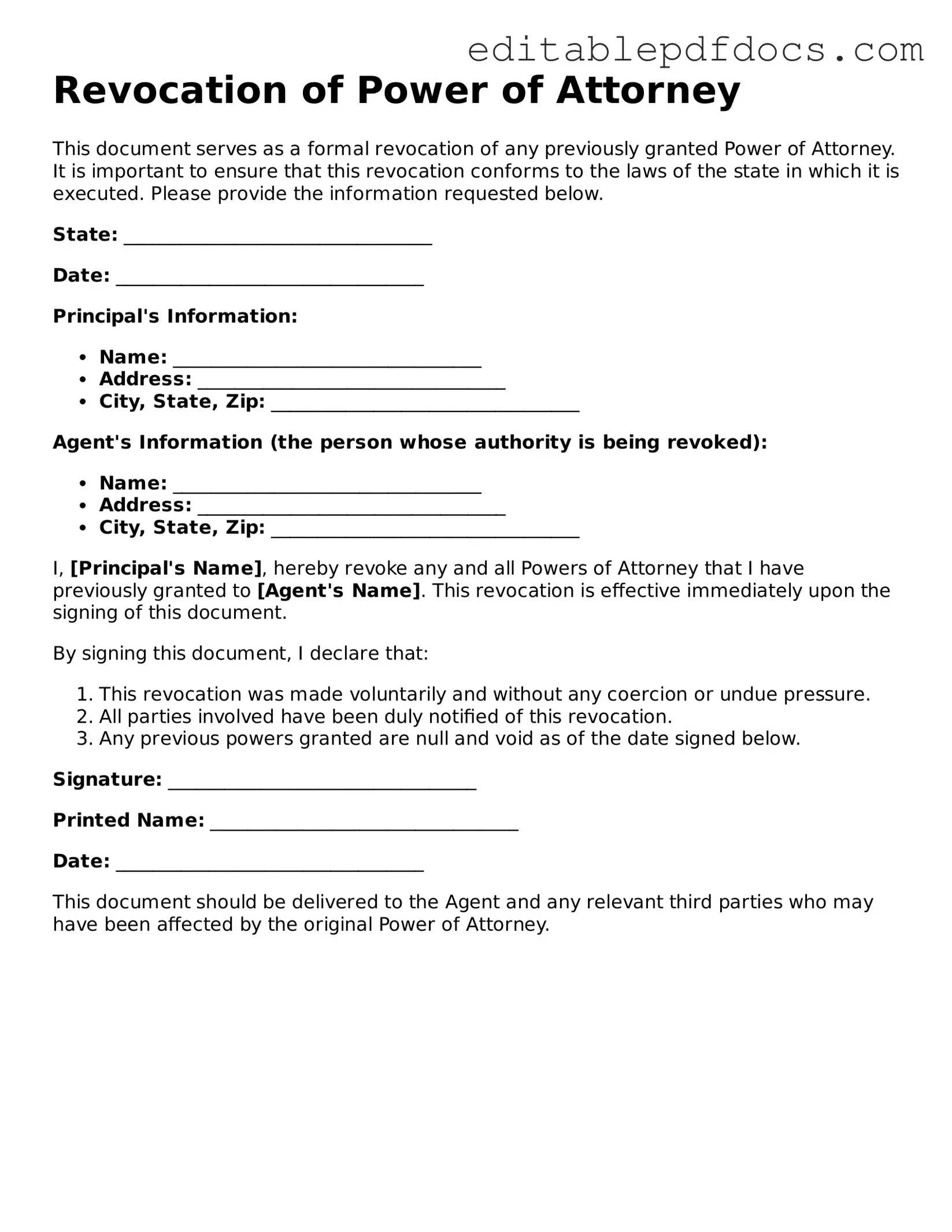Filling out a Revocation of Power of Attorney form is a crucial step for individuals who wish to terminate a previously granted authority. However, mistakes can easily occur during this process, leading to confusion and potential legal complications. One common mistake is failing to clearly identify the original Power of Attorney. It is essential to provide specific details about the original document, such as the date it was signed and the names of the parties involved. Without this information, it may be difficult to establish which authority is being revoked.
Another frequent error is neglecting to sign and date the revocation. A signature is vital, as it signifies the intent to revoke the authority. Additionally, dating the document ensures that there is a clear timeline regarding when the revocation takes effect. Without both of these elements, the revocation may be considered incomplete or invalid.
People often overlook the importance of notifying the agent named in the original Power of Attorney. After completing the revocation form, it is imperative to inform the agent that their authority has been terminated. This communication helps prevent any misunderstandings and ensures that the agent does not continue to act on behalf of the principal, believing they still hold authority.
Another mistake involves failing to have the revocation notarized or witnessed, when required. Some states have specific requirements regarding the witnessing or notarization of such documents. Not adhering to these requirements can result in the revocation being challenged or deemed ineffective.
Additionally, individuals sometimes forget to keep a copy of the completed revocation form for their records. Retaining a copy is important for future reference, especially if questions arise about the revocation or if further legal actions are necessary. Without a copy, proving that the revocation occurred may become complicated.
People may also make the mistake of not considering the impact of revoking a Power of Attorney on other legal documents. For example, if the Power of Attorney was part of a larger estate plan, revoking it could have unintended consequences. It is advisable to review all related documents to ensure that the revocation aligns with overall legal intentions.
Another common error is using outdated forms or templates. Laws and requirements can change over time, so it is crucial to use the most current version of the Revocation of Power of Attorney form. Relying on old forms may lead to compliance issues and could invalidate the revocation.
Some individuals may feel pressured to fill out the form quickly, leading to careless mistakes. Taking the time to carefully review the information and ensuring accuracy is essential. Rushing through the process can result in errors that could have been easily avoided.
Lastly, failing to seek legal advice when needed can be a significant oversight. While it is possible to complete the form independently, consulting with a legal professional can provide clarity and assurance. They can help ensure that all aspects of the revocation are properly addressed and that the individual’s rights are fully protected.
